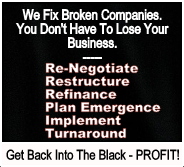If you are seeking to raise capital (either debt or equity), attempting to negotiate a joint venture (or merger or acquisition) or trying to recruit some talented key employees or technical experts, you might need a "Summary Of Proposed Operations," a spiffy PowerPoint "Highlights Of The Company And Its Bright Future," a "Confidential Private Placement Offering Memorandum" or a public Offering Prospectus. If you are interested in creating a genuine blueprint for the implementation of your intended business operations, i.e., a step-by-step, function-by-function manual to be your company's guiding beacon, you need a real Business Plan. A true business plan is a detailed map and manual for attaining your objectives --- it is never, ever a selling tool filled with fluff, wishful thinking, optimistic (albeit disclaimed) "projections," and solicitous flowery language about vast potential.
The best presentation documents are brief, enticing, attention-holding and notably light on 'boring' specifics. They are drawn for the purpose of stimulating curiosity and interest; the best ones open the doors for further conversations and lead to the capture of precisely what they are targeted for. They are tools that involve much more knowledge of behavioral psychology, subliminal messaging and call to action coupled with a sense of urgency.
Most businesses produce documents that are useless hybrids...they are a combination of detailed business plans and presentation documents. These hybrids generally accomplish nothing. And they are, sadly the norm in businesses, both for well-established organizations and early-stage enterprises. It is a useless tradition which perpetuates mediocrity and excessive trial and error.
The key to creating and deploying effective business plans AND presentation documents is to be certain never to confuse the two. No one document satisfies all purposes.
Actionable Agenda:
1) Determine the specific purpose you need the document to serve;
2) Determine the exact vertical audience you wish to present it to or to share it with;
3) Set forth a very specific outline of what the document will contain -- and be sure to avoid deviating from the specific mission of the document;
4) Frequently review the document during its preparation to ensure that it does not stray from its outline, and that it does not begin to incorporate the characteristics of the "other" type of document.
5) Audition the final document in front of a disinterested focus group -- forget about sycophants, "yes men," flatterers, and people who are as obsessed as you must, of necessity, be, in the outcome or success of the mission to be accomplished by the document. Court harsh, direct criticism, and do not seek to defend your work --- swallow your pride of authorship (and emotional investment in your literary or artistic creation) and fine-tune the document to address any legitimate and substantial deficiencies. The idea is to "bulletproof" and strengthen the document. There is no benefit in self-praise or self-defense when it comes to the finished document; whether it is a business plan (the best ones are like military procedure manuals, but with fewer acronyms), or a presentation piece for money, a transaction, or the acquisition of a high-powered C-Suite rainmaker, turnaround expert or brilliant manager.
Never conduct a final edit or review of your own work. Run it through a true, candid focus group gauntlet. If it gets clobbered, reconstruct the vulnerable pieces until it can withstand rigorous, intelligent criticism. Learn to solicit criticism. Learn to use it as your greatest ally in achievement of your business and project management objectives.
The best business plans tend to be the worst presentation documents and vice versa. Always bear this in mind.
Douglas E. Castle [http://aboutDouglasCastle.blogspot.com]










No comments:
Post a Comment